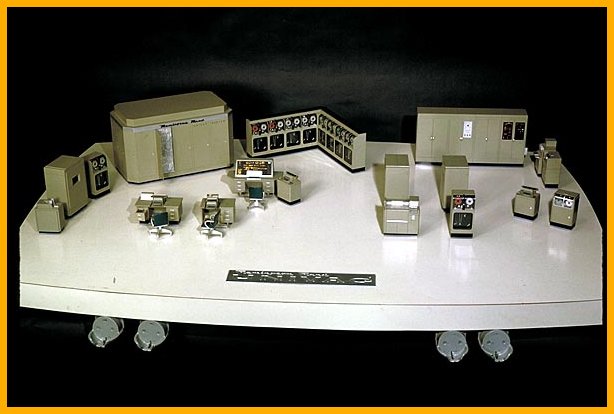|
First and second generation mainframe computer rooms were complete
with raised flooring, special power, with ultra-heavy-duty air conditioning, and with a hefty side order of Halon fire extinguishers.
Before proceeding, you can learn what the term computer
"generation" means. that is, what exactly defines a 1st, 2nd, 3rd, 4th, and 5th generation computer.
To find out, just click on the web site link below..
The Five Generations of Computers - LINK
Programmable Colossus machines like the one shown below were used by British Codebreakers in World War II to read German encrypted teleprinter messages. First operational at Great Britian's Bletchley Park in December 1943, the 1944 Colossus Mark II improved on the original design. A total of ten Colossus Mark II machines were
operational by the end of the war and were invaluable in breaking the German Enigma code.
|
|
| British Colossus Computer - LINK |
Shown below: The UNIVAC I (UNIVersal Automatic Computer I): The first commercial
computer made in the United States. It was designed by J. Presper Eckert and John Mauchly, the men behind the second American electronic computer, the ENIAC. During the years before successor models of the UNIVAC I appeared, the machine was simply known as "the UNIVAC".
The first UNIVAC was delivered to the United States Census Bureau on March 31, 1951. The fifth (built for the Atomic Energy Commission) was used by CBS to predict the 1952 presidential election. With a sample of just 1% of the voting population it predicted that Eisenhower would win; something
nobody would believe, but UNIVAC was right!
The UNIVAC I computers were built by Remington Rand's UNIVAC-division (successor of the Eckert-Mauchly Computer Corporation, bought by Rand in 1950).

|
| Univac I Computer 1954 - Curtesy of Smithsonian - LINK |
|

